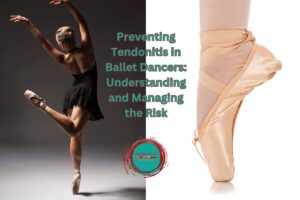Examine your breasts monthly.
 Despite images in the media which show copious cleavage and bountiful breast feeding, many women say they’re nervous about doing a breast self examination. Others claim they never examine their own breasts because they don’t know how. Top tip: a friend told me she asks her partner to do it for her! Regardless of your views, monthly self breast examination is important because about 80% of lumps are found by women themselves.
Despite images in the media which show copious cleavage and bountiful breast feeding, many women say they’re nervous about doing a breast self examination. Others claim they never examine their own breasts because they don’t know how. Top tip: a friend told me she asks her partner to do it for her! Regardless of your views, monthly self breast examination is important because about 80% of lumps are found by women themselves.
Why don’t women examine their breasts monthly? Some women may not realise how important it is. Other women may think they’re too young to worry about it. Fear of breast cancer could also be to blame. The following list includes some of the fears and anxieties expressed by breast cancer patients of the Breast Unit at Hospital of St John & St Elizabeth:
- Mortality
- What to tell their children
- Pain from surgery
- Altered body image
- Loss of confidence/control
- Further treatments/side effects of treatment
Promoting women’s health and encouraging women to look after themselves is an integral part of physiotherapy practice. Often physiotherapists are the first people patients talk to about changes in their health. That’s why it seemed fitting (pun intended, see above) for us as physios to learn how to examine our breasts.
As part of in-service training at The Hospital of St John & St Elizabeth, breast care nurse and St Joseph’s Ward Manager Catherine O’Connor presented to the physiotherapy team on proper self-breast examination. Catherine also talked about the Breast Unit at Hospital of St John & St Elizabeth, which consists of a multi-disciplinary team led by consultants and nurses who are dedicated to providing the ultimate standard of care.
For more information, visit www.thebreastunit.org.uk or www.breastcancercare.org.uk. Another wonderful organisation the Breast Unit supports through fund raising efforts is CancerKin for people affected by breast cancer, www.cancerkin.co.uk.
Adult women of all ages are guided to examine their breasts monthly. If you are still menstruating, wait until the last day of your period or when you finish your pack of birth control pills, then examine your breasts. If you are menopausal, choose one day each month, like pay day or the 1st of the month, to examine your breasts.
Get To Know Them
If you get to know what your breasts look like, you will be able to recognise changes. Stand in front of a mirror in good light and undress to the waist. Look at both breasts, from the front and the side. Then ask yourself these questions:
- Any puckering or dimples around the areola (dark disc around the nipple)?
- Is the skin scaly, inflamed or discoloured?
- Does the nipple look distorted?
- Can you see discharge coming from the nipple?
- Is there any swelling in the upper arm or armpit?
If you answered yes to any of these questions, make an early GP appointment. This may be an indication that something is wrong, but it doesn’t necessarily mean it is serious.
All Shapes and Sizes
It is normal to be asymmetrical. People have leg length discrepancies, one foot bigger than the other or one ear higher than the other. It is also normal to have one breast larger or higher than the other. The following tips help you identify changes in the shape of your breasts:
- Clasp your hands behind your head and press your hands forward
- Rest your hands on your hips and bow slightly towards the mirror as you pull your shoulders and elbows forward
- Each time you tighten your muscles observe how your breasts change shapes
- Once you know how your breasts look in steps 1 & 2, you’ll be able to notice any future changes that occur

Feel for a Change
It’s easiest to feel the texture of underlying breast tissue in the shower or bath by using soapy fingers. Raise one arm above your head and slide the flat (not the tips) of your fingers over the skin. Keep your fingers together and gradually work from your collar bone (above the breast) in a spiral towards the nipple. Pay close attention to the tissue between your breast and armpit. Now ask yourself these questions:
- Are there any unusual lumps or bulges?
- Is the underlying tissue thickened or lumpy?
- Did you feel enlarged glands in the armpit?
- Was there any pain other than menstrual soreness?
If you found anything unusual, check the same place in the other breast. If you are concerned there is something wrong, gently mark the area with a felt tipped marker and make an early GP appointment. Remember, while most lumps are not cancerous it is best to seek reassurance sooner rather than later.





Comments
One Response
Fantastic information that I am grateful to have received. Our breast health is as important as every other organ. Thank you so much for this. Well done!